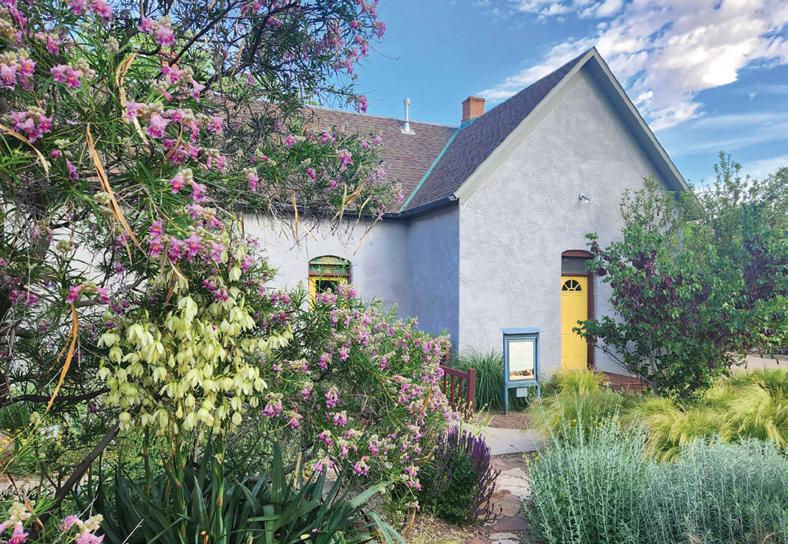
10 minute read
CULTIVATING GOODNESS
Thriving Youth Garden Project is an oasis of plants, produce and events for kids of all ages
She fundraises, builds and maintains community partnerships, steers the nonprofit and keeps it aligned with its mission, which is to grow food, kids and community. Those goals are achieved through the garden itself, which not only produces food, but is a classroom and playground for summer campers, an opportunity for community members to volunteer time and labor, and a gathering space for events.
Advertisement


Roberson also helps out with garden chores: one of her goals is for each of the 12 staff members—including herself—to pull one bucket of weeds per week. Other tasks include cleanup and maintenance; on the day I visited, I saw Roberson wiping down windows.
“We all take a lot of shared ownership in the space,” Roberson says.
The Youth Garden began in 1996, in the backyard of its founder, Sarah Heffron. She intended it as a place where young people could complete court-ordered community service hours in a nurturing environment. About a dozen kids worked there in its first year. Since those early days, the garden has greatly expanded its reach. Among its various programs and events are the Youth Garden Project summer camp, which hosts 24 campers per week for nine weeks; the Community Supported Agriculture program, which offers 30 produce shares; biweekly summer “Weed ‘n’ Feed” gatherings; and Harvest of the Month, through which Grand County School District students get to try fresh vegetables in their cafeterias.


But aside from all the programs and events, YGP staff emphasize that the garden is open for the community to explore and enjoy any time. The campus is just off the city’s multi-use pathway and next to Grand County High School. Passersby are welcome to stroll through the garden, taste produce from the “nibble garden,” and enjoy the flowers and shade.
“That is encouraged!” says Jessica Shalvey, outreach and development director for YGP.
A Tour Through The Garden
The garden is composed of a variety of beds, boxes, pathways and structures, labeled with colorful hand-painted signs and graced with whimsical names: for example, an herb garden is planted in a sinuous shape and called “the Herb Curve”; raised garden beds planted by kids and used as teaching tools are called “Ed-beds”; the “Rabitat” is home to three rabbits who could easily tunnel their way out of the dirt-floored enclosure but seem content in their safe, well-fed existence. YGP summer campers love visiting the rabbits, Shalvey says, and feel especially important when they’re charged with making sure their feeders are stocked.
Many of the beds are devoted to production of food for Community Supported Shares (CSA) and for events like Weed ‘n’ Feed, where volunteers pull weeds in exchange for a meal made from garden produce. On a hot afternoon in July, dark shiny eggplants glistened in one row; collard greens flapped open their wide ribbed leaves in another; and tomatoes were just beginning to deepen into a mature red.
Other beds are for lessons and engagement: the Sensory and Snack garden features plants that stimulate all the senses—things like “buzz buttons” (Acmella oleracea), which “give your tongue a tingly feeling,” Shalvey says. Kids also get to taste tomatoes and pep- pers at different stages of growth, discovering the difference between a tart, green, unripe tomato and a sweet, juicy, ripe one.
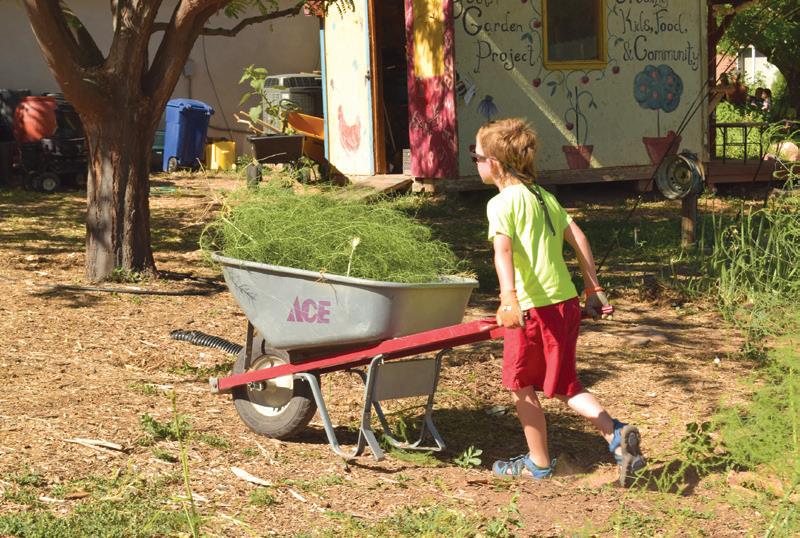
Grand County local Diane Ackerman, a seasoned gardener, who recently taught a community composting workshop at YGP, planted a few heirloom vegetables at YGP as a seed saving effort—those unique celery and broccoli varieties are tucked into a small bed alongside flowers and other vegetables.
YGP farmers also like to experiment. In the low-lying area that was destroyed by floods last year, farm manager Ben Menard is growing corn and learning how well it can thrive in Moab’s climate and soil. In the greenhouse, staff are raising fig trees; one has already been planted outdoors, and they hope to grow more and see them produce fruit.
Here and there plants lend their support to structures. Red-orange trumpet flowers hang from vines that have leafed out over the wooden-post roof structure of the “sunken classroom,” a round, shady meeting space whose floor is dug a couple feet below ground. There’s also a “grape tunnel,” formed by thick, leafy vines trained over hoops to form a long, shady passage.
Other structures extend the growing season. In addition to the greenhouse (which recently got a new roof and an electrical upgrade), there’s a hoop house and the “Grow Dome.”
The Dome is a faceted, geometric building made up of translucent triangular panels, some of which open to help regulate the temperature inside. They’re operated by a solar panel, as is a pump that cycles water in a large stock tank inside the dome. Bright orange goldfish wriggle to the surface when Shalvey sprinkles some feed into the tank, which also helps to thermoregulate the dome. In the center of the Grow Dome, tomato vines climb up strings hanging from the ceiling—they’re tall enough that harvesting the fruit will require a ladder. Shalvey says that, last year, the dome was so effective at maintaining a friendly growth environment that staff cultivated tomatoes into December.
Beyond a series of composting stations and the gravel parking lot, chickens roam under an orchard of fruit trees. They’re well-used to people—Shalvey said campers love to pick them up and pet them. The chickens have access to a coop on the edge of their enclosure, and visitors can open small portals from outside the enclosure to take a peek inside the coop. Behind one of the colorful, egg-shaped swinging portal doors was a feathery wing—a few chickens roosted inside.
YGP’s main office is no less unique than its various other structures. It’s the oldest standing home in town, built in 1884, restored in 2002, and listed in the National Register of Historic Places as the John Henry Shafer House, named after the early Euro-American settler for whom it was built. Its adobe walls were replastered by local natural plaster experts last year.
Just outside the office door, the landscaping is packed with native plants: cacti and flowers that thrive naturally in the desert environment. Some are from neighboring ecosystems—for example, a cholla cactus that comes from the Mojave desert—but they all flourish in Moab’s dry heat.
Events And Programs
YGP’s first event of each season is the Seed Swap, which happens in February, where community members can meet and trade seeds. In early April there’s the plant sale, where garden staff sell flower and vegetable starts nursed in the greenhouse. Also in early spring is the first of the season’s garden dinners, fundraising events where local chefs prepare meals from garden ingredients.
At this spring’s first garden dinner, about 40 guests bought tickets to share a fourcourse meal at a long communal table set up in the garden.
Local chefs Tim Buckingham and Bernard Guillas (who co-host a radio show on local station KZMU called Chef’s Adventures with Buck & Bernie) primarily used produce from the Youth Garden to create the dishes, supplemented with donations from local food retailers like Ye Ol’ Geezer Meat Shop.
“That’s kind of the challenge of it,” Shalvey said—creating an upscale meal with a limited choice of ingredients.
The courses included pickled kohlrabi and hummus dips flavored with garden herbs; a bouquet of garden greens tucked into a tomato cut like a napkin holder to make an elegant display; and a roasted red pepper and tomato jam. The main course was roasted vegetables with chicken and quinoa. The meal wrapped up with an apri- cot and cherry dessert, using preserved produce from the previous year.
There will be another garden dinner in late summer, with a more family-friendly tone—Shalvey says they’re calling it the “Farmily” garden dinner.

Summer is the busiest season at the garden. Along with garden dinners and Weed ‘n’ Feed, there are the CSA shares, some of which are donated to the Moab Valley Multicultural Center and Seekhaven Family Crisis and Resource Center.


Summer camp is a huge part of the organization’s mission. Some of the kids who attend summer camp are familiar with gardening and interested in it; some have never experienced it before. The Youth Garden Project offers some of the most affordable summer child care in the area, so it’s a popular option for all families whether or not they’re gardeners.
Each week of camp has a theme such as theater, mystery, or outer space. There are all the traditional camp activities—games, crafts, and play. During one week of summer camp this year, Shalvey says, a group of boys in 1st, 2nd and 3rd grades eschewed regular camp activities in favor of farm chores—things like pushing wheelbarrows, moving rocks, spreading straw mulch.
“They were really stoked about helping out on the farm,” Shalvey says. She thinks they’re intrigued by the “mysterious adults” they see working around the garden while camp is going on. When the kids ask what those adults — like Menard, the farm manager, or Abby Ellis, the Americorps VISTA worker — actually do, they’re welcomed with friendly explanations and invitations to engage.
“They’re always down to teach the kids when they wander over,” Shalvey says.
Perhaps inspired by those kids, YGP launched a new part of camp called “Camp Chores,” where kids have the opportunity to shoulder responsibilities like checking the chicken coop for eggs and making sure the rabbits are fed.
Roberson is a firm believer in the organization’s mission of “growing kids.” Giving kids first-hand experiences will foster a value for ecosystems and small farms, she says.

“Logical choices aren’t what drive people; emotional choices are what drive people,” Roberson says she’s learned from her background working in nonprofits. Creating childhood memories in a beautiful and welcoming garden creates a powerful emotional connection to the natural world.


“That’s the foundation for them being civically and environmentally minded,” Roberson says.

The garden carries on that part of its mission during the school year. YGP hosts field trips every year for multiple grades. Middle school students can take cooking workshops at the garden. High school science teachers sometimes incorporate trips to the garden in their curriculums—YGP has hosted workshops on food science, jamming and canning, for example. High schoolers sometimes work in the garden to complete community service hours for the National Honor Society or other obligations.
“We’re able to reach every single kid in Grand County,” Shalvey says.
In the fall, YGP closes down the season with the Harvest Festival, featuring live music, games and activities like face painting and crafts. There’s a produce exhibition with conventional categories as well as some more creative entry options like “weirdest vegetable.” There are tasting contests for homemade pies and hot sauce.
“It’s just a fun, small-town festival,” Shalvey says. This year’s will be on Saturday, Sept. 23.
During the winter, YGP holds an annual online auction as a fundraiser, and also as a way to keep the community engaged. Local businesses donate items for the auction; last year, there were over 550 donations from over 300 artists and individuals.
Working With The Season
The garden takes a break from hosting Weed n’ Feed in the month of July—with afternoon temperatures frequently over 100 degrees, it’s a good time to pause on outdoor labor. But this July, in lieu of the weeding party, the garden hosted a “U-pick Picnic” on July 19.


“It’s a good fruit year—we have so much!” Shalvey says. Peaches and plums were sold by the pint, and attendees could also purchase a la carte picnic items to enjoy on the garden grounds. The U-pick Picnic is a new idea, and an illustration of how YGP staff remain flexible and creative in using what the season brings to meet their mission goals.
In that spirit of flexibility, YGP welcomes volunteers who want to contribute outside of scheduled events. Diana Pedley regularly visits the campus in the mornings. She first heard about the Weed ‘n’ Feed events when she moved to the Moab area in 2008, but she was daunted by early evening summer temperatures, which can be very warm.
“Several years later I was at a brunch, whining about said heat, and one of the YGP people said, ‘hang on, you can come over any time!’” Pedley remembers. “So that led to my volunteering one or two mornings a week when it was still cool enough.”
Pedley especially enjoys weeding, because it’s “satisfying,” she says, and lowstakes, as it leaves the job of growing things and keeping them alive to others. Pedley does have her own garden, but she doesn’t grow vegetables or food.
Pedley says that while she feels good about contributing to a community project and enjoys engaging with the garden and the wonderful people there, the real reason she keeps volunteering is straightforward.
“Really, I just like to play in the dirt,” she says. When the pandemic shut down in-person activities, Pedley realized how much she values her connection to YGP.
“I was so happy when YGP figured out how to have us back safely,” she says. “[It] reinforced how much I love having this garden in my life.” n
TREASURED LOCATION
3333 Far Country Drive | $3,595,000

4 BD | 3.5 BA | 4,704 SF | 6.85 AC | MLS 1865130
CASITA 2 BD | 1 BA | 865 SF and Studio Apt
Custom, luxury estate embraced by dreamy red rock landscape, offering breathtaking national park views. Exquisite sunsets abound, and the La Sal Mountains loom lovingly on the horizon. Located 10 minutes from downtown Moab and 30 minutes from the airport. Angela Houghton (435) 260-0700 / Kim Kirks (801) 369-9184


Lynda Diem (435) 260-9244

Kim Kirks (801) 369-9184
Janet Thomas (435) 760-0316
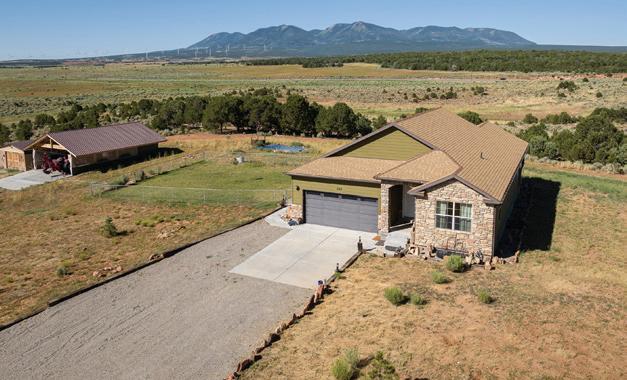



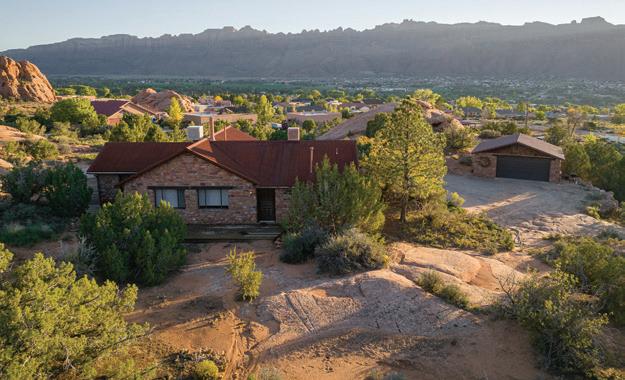

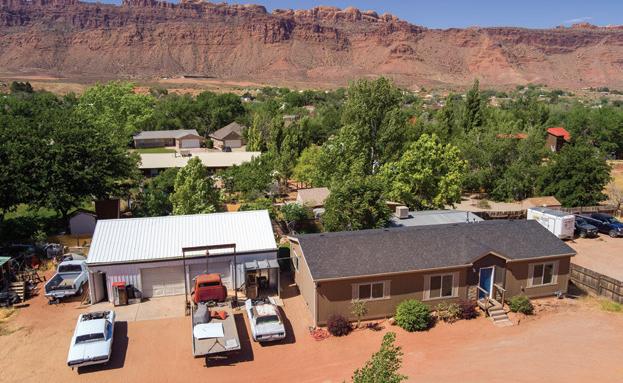
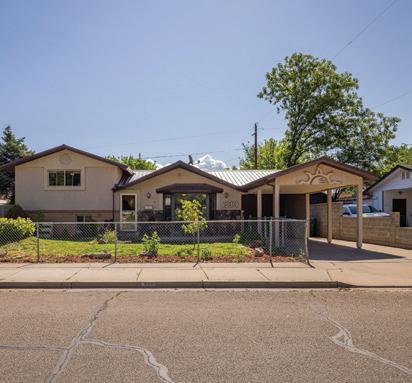




Lynda Diem (435) 260-9244
Kerby Carlisle-Grant (720) 480-0890
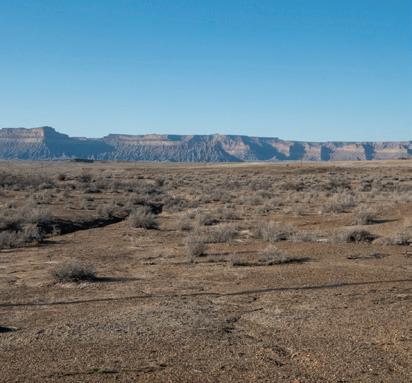


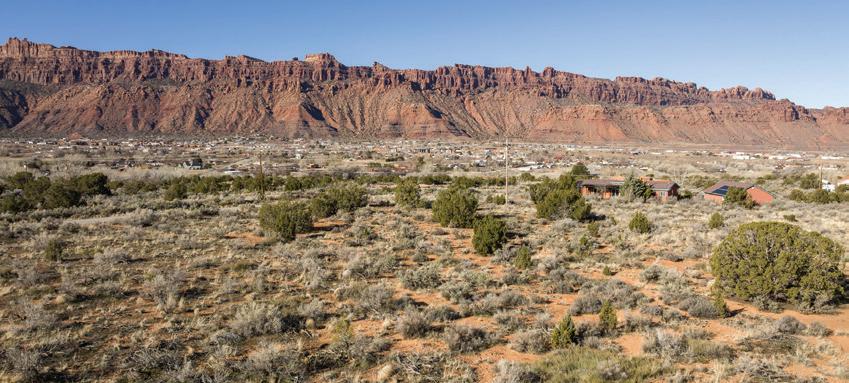
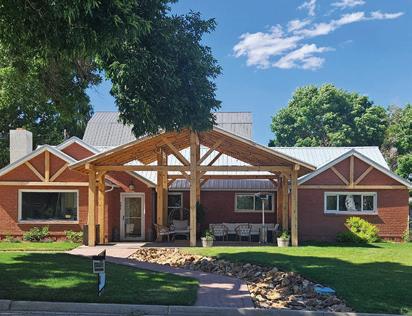






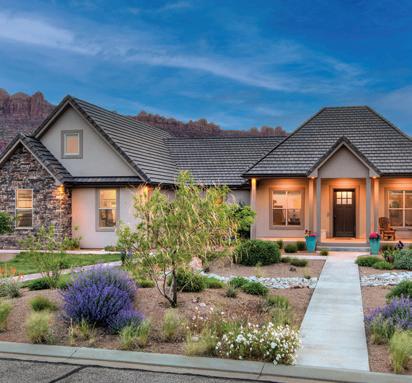


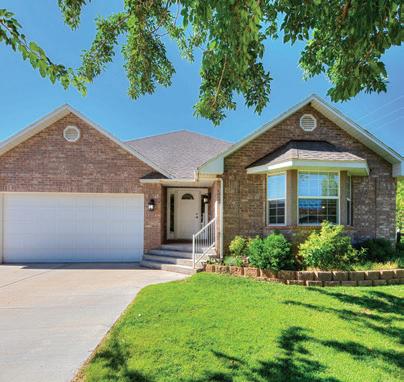



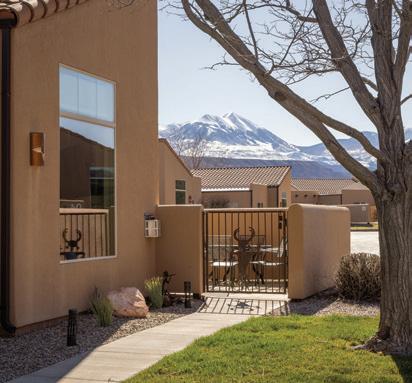



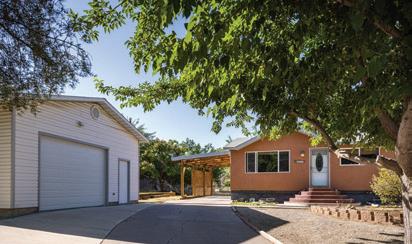




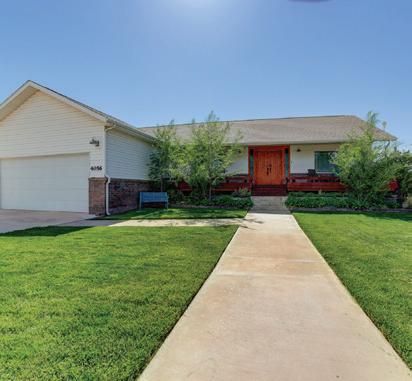




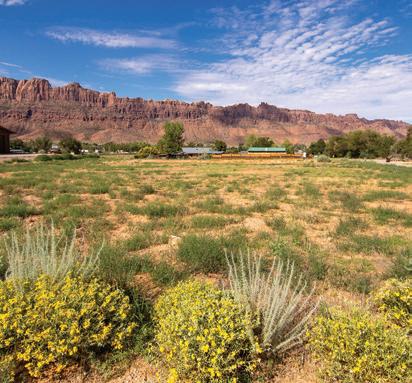

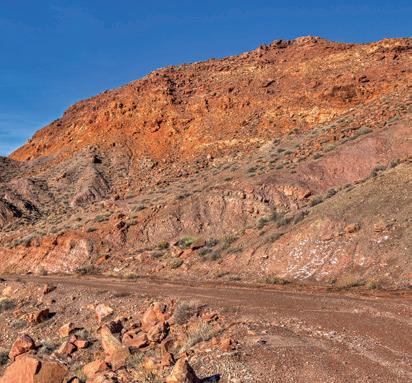



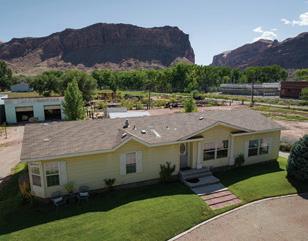

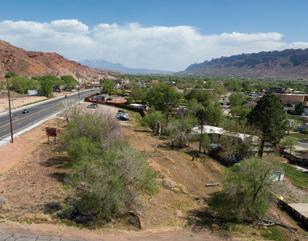
BUYER INCENTIVE!
Seller paid 2/1 buy down for primary residents!
MURPHY FLATS
1187 S Murphy Lane
Current Availability
105D | 1 BD, 1 BA, 440 SF | $270,000
106A | 1 BD, 1 BA, 430 SF | $260,000
106C | 1 BD, 1 BA, 440 SF | $270,000
106B | 1 BD, 1 BA, 440 SF | $270,000
106D | 1 BD, 1 BA, 440 SF | $270,000
Rachel Moody Team (435) 260-8240
This Unit Available to All Purchasers! No Deed Restriction.

MURPHY FLATS 102B
1187 S Murphy Lane
2 BD | 1 BA | 615 SF $455,000 | MLS 1873933
Rachel Moody Team (435) 260-8240 www.MurphyFlats.com
Offered exclusively to Grand County actively employed Buyers. These new construction condominiums are designed for adventure and intentional living. Situated less than two miles from the center of Moab, Murphy Flats gives owners space to store gear and rest up between adventures. Enjoy access to the community garden, fire pit, and dog park!
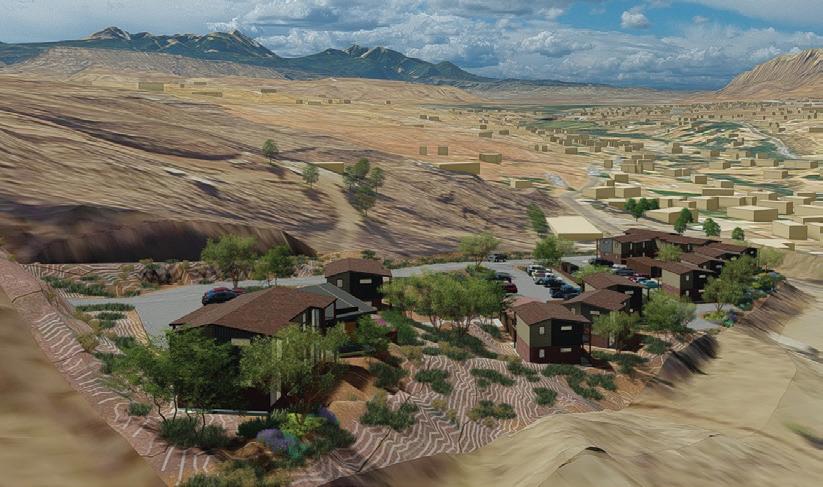

Kane Creek Condominiums
443 Kane Creek Blvd www.moabreco.com/KaneCreekCondos
A short walk to downtown Moab and minutes to all that Moab has to offer. Kane Creek Condominiums sits on over two acres located at the base of the Moab Rim. Each residence offers stunning views of towering red rock cliffs and the expansive Moab Valley with sights of Arches National Park, Swiss Cheese Ridge, and the La Sal Mountains.
CURRENT AVAILABILITY
B103 | Studio, 1 BA, 500 SF | $289,000
Rachel Moody Team (435) 260-8240
B112 | Studio, 1 BA, 500 SF | $275,000
Shannon Meredith (435) 260-7484





